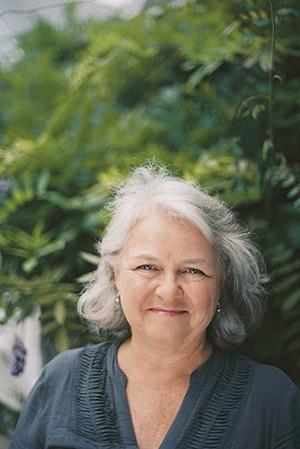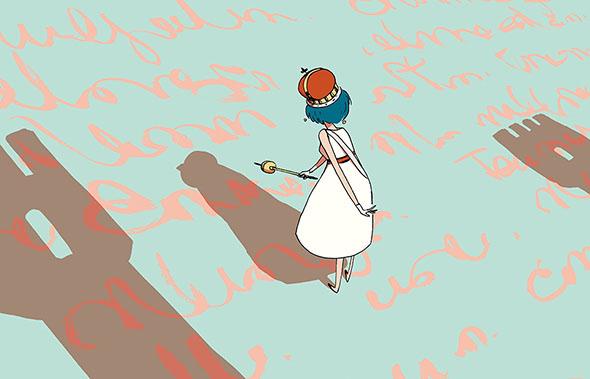I became a copy editor by accident four years ago. I saw a tweet (accidentally posted, I would later find out) advertising a part-time copy editing position at Slate. I hadn’t thought of myself for such a role previously; a poor speller, I rarely copy edited my own papers in college and didn’t have an opinion about the en dash, or even know how to use one. But, during an interview for a fact-checking job at a magazine in Philadelphia, I was asked to describe why I’d make a good member of their staff—“for example,” the interviewer said, “our copy chief can’t help but copy edit things. When he sees a sign, he immediately marks it up in his mind.” I didn’t get the job—I knew nothing about Philadelphia—but I liked that notion, and realized I did that too. I noticed incorrect or inconsistent details even if I wasn’t instantly sure how they should be fixed. I used that line in my Slate interview and have been copy editing ever since.
It seems fitting I became a copy editor by accident. After all, it’s a profession that only exists because of accidents.
The copy editor is most successful when nobody notices her. A copy editor who is invisible to the point of seeming unnecessary is often the best at her job—it means she never lets anything through. It’s only the writer and editor, whose grammar or logic the copy editor questions, who ever have the opportunity to truly appreciate the copy editor’s influence. But when your job is, in its essence, telling people that they’re wrong, sometimes being invisible is the preferred option.
Mary Norris isn’t just any old copy editor. She’s the comma queen. Of course Norris, who began working at the New Yorker in 1978, also became a copy editor by accident. As she confesses in the introduction to her delightful memoir, Between You & Me: Confessions of a Comma Queen, she held a quirky array of jobs before she landed at the magazine: milkwoman, costume store clerk, checking the feet of swimmers at a local pool to make sure they had properly applied disinfectant. (This last may have been unique to her hometown of Cleveland.) A friendly family connection, the way all these stories seem to begin, led her to the magazine: At the Art Students League of New York, her brother met the wife of the chairman of the board, who also happened to be the son of New Yorker co-founder Raoul Fleischmann. After flunking the test for the typing pool, she ended up in the editorial library, where, one day, she noticed flour had been spelled flower in a page about to go to print. The rest is history.
In her collection of essays, Norris does much to glorify the position of copy editors—to give them real purpose and editorial weight, detailing the New Yorker’s storied traditions and the occasional amendments to its style. As a copy editor and New Yorker fan, I was particularly interested in her discussions of how the magazine’s style has changed over time. This happens at all magazines, of course; at Slate, we recently stopped capitalizing, in headlines, to in infinitives: “To Be or Not To Be” became “To Be or Not to Be.” (We also went from “The New Yorker” to “the New Yorker,” which some might see as a demotion, but which I see as putting an article in its proper place.)
But when a magazine’s style is as encoded in its DNA as the New Yorker’s is, it piques a fastidious reader’s interest. While theatre will never be theater, and numbers will always take up too much space in letters instead of digits, Norris reveals that the famed diaeresis—often confused for an umlaut—almost went extinct in 1978. But the person coördinating its elimination passed away the weekend before it was scheduled to take place, and no one’s tried to abolish it since. My favorite copy commentary comes in a chapter about apostrophes while discussing where to draw the line on style and rules. A copy editor can be tempted to stick to guidelines, but when it comes to the plural possessive of McDonald’s, sometimes rules need to be broken. As Eleanor Gould, the famed New Yorker style guru, told Norris: “You have to stop somewhere.” The New Yorker stopped at the hideous-looking McDonald’ses’.
Norris’ wonderfully confiding voice made me regard her as a friend: the friend you don’t see often enough, but when she’s in town, you have a wonderful time gossiping about anything and everything over a beer or three. She is at once exactly who you’d expect a New Yorker copy editor to be—she texts in German!—and yet she still, more than three decades in, seems genuinely shocked to be working with the writers and editors at the magazine.

Photo by Josef Astor
Like all copy editors, Norris is aware of the prevailing impression: “The image of the copy editor is of someone who favors a rigid consistency, a mean person who enjoys pointing out other people’s errors, a lowly person who is just starting out on her career in publishing and is eager to make an impression, or, at worst, a bitter, thwarted person who wanted to be a writer and instead got stuck dotting the i’s and crossing the t’s and otherwise advancing the careers of other writers. I suppose I have been all of these.” If her appearance at the storytelling event the Moth made her seem a tiny bit bitter, the book paints life as a copy editor as delightful, even magical: “Job of copy editor is to spell words right: put hyphen in, take hyphen out. Repeat. Respect other meaning of spell: spell writer weaves.” Not that she wanted to do this forever—the book feels like a way of justifying the decisions she’s made and the rejections she’s received along the way, including from the New Yorker.
Norris began blogging about grammar for the New Yorker’s website in response to a New York Times blog post about the magazine’s commas; the book, which was born out of these posts, doesn’t always feel transformed enough to warrant this new shape. There’s shoptalk embedded around a personal narrative that is occasionally amusing and equal times too detailed about New Yorker policy. Do we need another New Yorker memoir? Probably not. Do we need another book on style? Not really. But that doesn’t mean it’s not a pleasure to read Mary Norris—it just means that perhaps a book isn’t the best way to appreciate her wit and style. Norris, like all copy editors, is at her best when responding to others. Indeed, the New Yorker has gone all out—she now hosts her own video series—and this mode of directly addressing her readers and watchers seems like the one best suited for her.
When I discuss the book with fellow copy editors, we all like to focus on Norris’ idea that copy editing draws on “the entire person”: “not just your knowledge of grammar and punctuation and usage and foreign languages and literature but also your experience of travel, gardening, shipping, singing, plumbing, Catholicism, Midwesternism, mozzarella, the A train, New Jersey.” It’s a lovely sentiment—one that Norris highlights throughout her vignettes, and that has helped me justify my excessive TV watching and show off my day school years spent reading the Old Testament. I’ve caught errors related to contemporary art, Paris, and Israeli politics. Norris celebrates the job, while making it clear through her book’s very existence that copy editing is also a stepping stone, one that can lead you to be a better editor or writer—perhaps of your own memoir.
—
Between You and Me: Confessions of a Comma Queen by Mary Norris. W.W. Norton.
See all the pieces in this month’s Slate Book Review.
Sign up for the Slate Book Review monthly newsletter.
